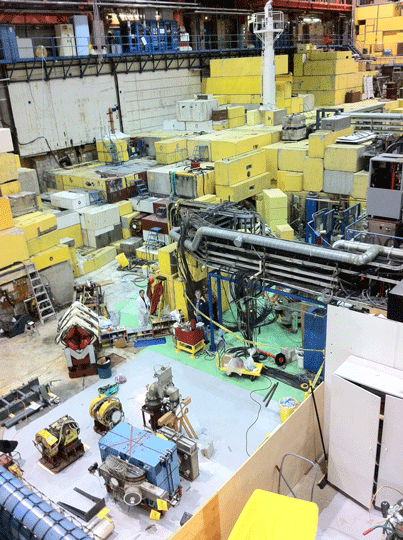TRIUMF (The Art and Science of Particle Physics)
 Thursday, January 20, 2011 at 8:17PM
Thursday, January 20, 2011 at 8:17PM 
I visited the TRIUMF lab at the University of British Columbia this week. This is one of three labs in the world that has the capacity to move the material world around at high speed to study the characteristics of sub-atomic matter. The other two are in Chicago (FermiLab) and Switzerland (CERN).
TRIUMF outlined three goals in its 2008 Mission Statement:
- Make discoveries that address the most compelling questions in particle physics, nuclear physics, nuclear medicine, and materials science
- Act as Canada's steward for the advancement of particle accelerators and detection technologies
- Transfer knowledge, train highly skilled personnel, and commercialize research for the economic, social, environmental, and health benefit of all Canadians
So, what was a humanities/art/design person like myself doing at Triumf? Well, Emily Carr has a collaboration with the lab that links science and art in a really interesting and productive way. Students from Emily Carr are working on visualizations of what Triumf does, which is gaze into those parts of the material world that the naked eye will never be able to see. Of course, the debate between the sciences and the arts has been going on for a long time. Suffice to say, that the differences are there, but the similarities, that is the desire to engage in creative thinking and output are shared.
It was artists and scientists working in close proximity who developed a deeper understanding of perspective which led among other things to a fundamental shift in painting but also to a profound change in a variety of technologies.
Artists and scientists have always been early adopters and developers of new technologies. The interactions are too numerous to mention. This quote summarizes the potential and the beauty of art and science meeting on a common ground.
"The materials in art pieces are universal. The sinuous molecules that bind pigments in oil paint are like those that beaded up in Earth’s primeval oceans to form the first cell. Glass is a translucent form of sand and is representative of the mineral content of the Earth’s mantle and Earth-like planets elsewhere. Metal is a relic of supernovae, the fiery stellar cataclysms that also enable biology by forging and ejecting life’s elements. Wood panels and paper are among the means by which formerly living things are brought into our service, making art an indirect homage to carbon and biology." The Living Cosmos: A Fabric That Binds Art and Science by Chris Impey and Heather Green (Leonardo, Volume 43, Number 5, October 2010, pp. 435-441)
 Art,
Art,  Science,
Science,  transdisicplinairty in
transdisicplinairty in  Science/Art
Science/Art 


